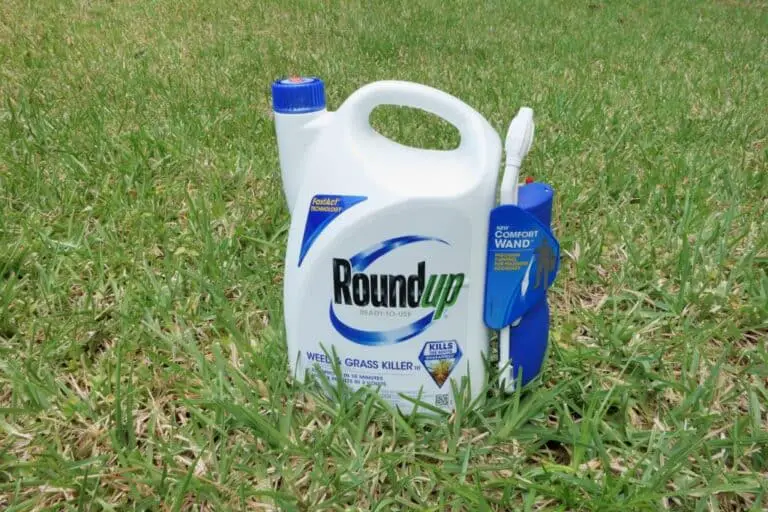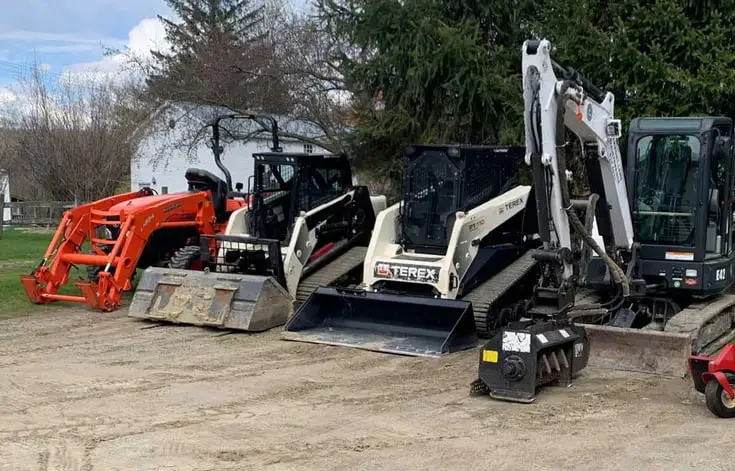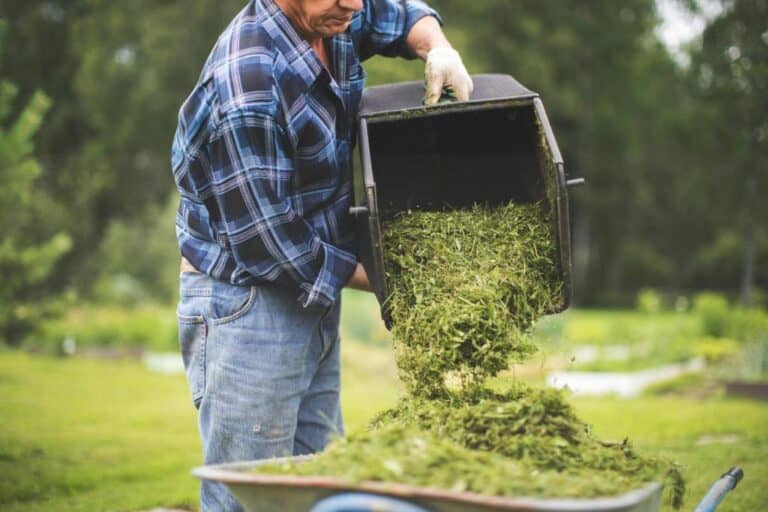How to Mulch Around Bushes and Shrubs? What Type of Mulch is Best?

Are you tired of constantly battling weeds and struggling to keep your bushes and shrubs healthy? Look no further than mulching! Mulch is an excellent way to improve the health and appearance of your garden while also reducing the amount of time and effort needed for maintenance.
However, with so many types of mulch available, it can be challenging to know which one is best for your bushes and shrubs.
In this article, we’ll explore the benefits of mulching and provide tips for effective mulching around bushes and shrubs. We’ll also discuss different types of mulch and their pros and cons, so you can choose the one that works best for your garden.
By the end of this article, you’ll be ready to mulch like a pro and have your garden looking its best!
Benefits of Mulching Around Bushes
Mulching around bushes can offer several benefits to both the plants and the surrounding landscape. One of the primary benefits of mulching around bushes is the suppression of weed growth. Mulch can help prevent the growth of weeds around the base of bushes, which can compete with the plants for water and nutrients. This, in turn, can help to improve the health and vitality of the bushes.
Another benefit of mulching around bushes is moisture retention. Mulch helps to trap moisture in the soil, preventing it from evaporating into the air. This can be particularly important in areas with hot, dry summers where water can be scarce. By retaining moisture in the soil, mulch can help keep bushes hydrated and healthy.
Mulch can also help regulate soil temperature around the base of bushes. It acts as an insulator, protecting the soil from extreme temperature fluctuations. This is particularly important during the winter months, when freezing and thawing cycles can damage the roots of bushes.
Mulching around bushes can also help to improve the appearance of the landscape. It provides a clean, finished look to garden beds and can help to highlight the beauty of the bushes. Additionally, mulch can help to prevent erosion and runoff, which can be particularly important in areas with steep slopes.
Types of Mulch for Bushes
Choosing the right type of mulch for your bushes can be challenging, as there are many different options available. The type of mulch that you choose will depend on several factors, including your climate, soil type, and the type of bushes that you have.
One common type of mulch is shredded hardwood bark, which is made from the bark of hardwood trees such as oak, maple, and cherry. This type of mulch is ideal for acid-loving plants such as rhododendrons and azaleas. It breaks down slowly, which means that it will last longer than other types of mulch, and it has a natural appearance that can enhance the look of your garden.
Another popular mulch option is pine straw, which is made from the needles of pine trees. This type of mulch is especially suitable for acid-loving plants, as it is acidic and can help lower the pH of the soil. Pine straw also breaks down slowly, which means that it will last for a long time, and it has a distinctive reddish-brown color that can complement the look of your garden.
For those looking for a more decorative option, there are several types of decorative rock mulch that can be used around bushes. These include river rock, lava rock, and pea gravel. Decorative rock mulches are long-lasting and come in a variety of colors and sizes, which means that they can be used to create a unique and eye-catching look in your garden.
In addition to these types of mulch, there are also options such as compost, grass clippings, and leaves that can be used to mulch around bushes. Compost is an excellent option as it provides nutrients to the soil, while grass clippings and leaves are readily available and can be used as a free source of mulch.
Preparing the Area for Mulching
Before mulching around bushes, it is important to properly prepare the area to ensure the best results. Here are several important steps in preparing area around bushes and shrubs before mulching
- The first step in preparing the area is to remove any weeds or debris from around the base of the bushes. Weeds can compete with the bushes for nutrients and water, which can affect their growth and health. Clearing the area of weeds and debris can also help to ensure that the mulch is applied evenly.
- After clearing the area, it is important to create a defined border around the bushes. This can be done using edging materials such as bricks, stones, or plastic barriers. Creating a defined border can help to prevent the mulch from spreading onto the surrounding lawn or garden areas.
- Next, it is important to loosen the soil around the base of the bushes. This can be done using a garden fork or cultivator. Loosening the soil helps to improve the absorption of moisture and nutrients, which can benefit the health of the bushes.
- Once the soil has been loosened, it is recommended to apply a layer of compost or organic fertilizer to the area. This can help to improve the quality of the soil and provide additional nutrients to the bushes.
- Finally, before applying the mulch, it is important to water the area thoroughly. This will help to ensure that the soil is moist and that the mulch will be able to retain moisture effectively. It is important to note that the area should not be waterlogged, as this can lead to root rot and other issues.
By properly preparing the area before mulching, you can help to ensure that the bushes receive the full benefits of the mulch and that the surrounding landscape remains healthy and beautiful.
How to Apply Mulch to Bushes
Applying mulch to bushes is a relatively simple process, but it is important to do it correctly to ensure that the mulch provides the maximum benefits.
- The first step is to choose the right type of mulch. There are many different types of mulch available, including wood chips, shredded leaves, grass clippings, and straw. Each type of mulch has its own advantages and disadvantages, so it is important to choose one that will work best for your specific situation.
- Once you have chosen your mulch, the next step is to apply it to the area around the bushes. It is recommended to apply a layer of mulch that is 2-3 inches deep. This depth helps to retain moisture in the soil, prevent weed growth, and regulate soil temperature. It is important to avoid piling the mulch up against the base of the bushes, as this can cause moisture to build up and lead to fungal growth or other issues.
- To apply the mulch, start by spreading it evenly around the base of the bushes using a rake or shovel. Be sure to spread the mulch out to the defined border that was created earlier in the preparation process. If you are applying a thicker layer of mulch, it may be helpful to use a pitchfork or other tool to fluff the mulch and spread it more evenly.
- Once the mulch has been applied, it is important to water the area again to help the mulch settle in and retain moisture. It is also recommended to check the area periodically to ensure that the mulch is still evenly distributed and has not shifted or blown away.
Mulching around bushes is an important step in maintaining a healthy and attractive landscape. By following these simple steps, you can ensure that your bushes receive the full benefits of mulching and that your surrounding garden areas remain healthy and beautiful.
Tips for Effective Mulching Around Bushes and Shrubs
Mulching around bushes and shrubs can be an excellent way to enhance the beauty and health of your garden. However, it’s important to apply mulch correctly to ensure its effectiveness. Here are some tips for effective mulching around bushes and shrubs:
- Determine the area to be mulched based on the size of the plant and the turning radius of your mower: Before mulching, you need to determine the area that needs to be mulched. Consider the size of the plant and the turning radius of your mower. This will ensure that you apply the mulch evenly and avoid having areas that are over or under mulched.
- Clear the area of grass and weeds to prevent them from growing through the mulch: Before applying the mulch, it’s important to clear the area of grass and weeds. This will prevent them from growing through the mulch and competing with the plants for nutrients and water.
- Apply mulch at a thickness of 2-4 inches, but avoid piling it up against the plant stem: When applying the mulch, make sure to apply it at a thickness of 2-4 inches. This will ensure that it provides the necessary insulation and protection to the plants. However, avoid piling the mulch up against the plant stem, as this can lead to rot and other problems.
- Choose a mulch that complements the aesthetic of your landscape: When choosing a mulch, consider the aesthetic of your landscape. Choose a mulch that complements the color and texture of your plants and landscape.
- Mulch wide but not deep to prevent damage to the plant and to insulate the ground: When mulching around bushes and shrubs, mulch wide but not deep. This will prevent damage to the plant and allow the ground to breathe. It will also help to insulate the ground and retain moisture, which is essential for the health of the plants.
By following these tips, you can ensure that your mulching efforts are effective and your bushes and shrubs thrive in a healthy environment.
What Bushes Plants Should Not Be Mulched?
While mulching is a great way to enhance the health and beauty of your garden, not all bushes and shrubs are suitable for mulching. In fact, certain types of bushes and plants may actually suffer if mulch is applied around them. It’s important to be aware of these specific plants to avoid any negative impact on their growth and health.
First and foremost, plants that prefer a dry and well-draining soil should not be mulched. These include cacti, succulents, and other desert plants that are adapted to sandy, rocky soil conditions. These plants do not require additional moisture and may suffer from root rot if mulch is applied around them, preventing proper drainage.
Similarly, shallow-rooted plants such as azaleas and rhododendrons are also not ideal for mulching. These plants have roots that are sensitive to moisture and may rot if mulch is applied too close to their stems. It’s recommended to leave a small gap between the mulch and the stem of the plant to prevent moisture buildup and potential damage.
Additionally, some plants are sensitive to the type of mulch used. For example, black walnut trees release a chemical called juglone, which can be toxic to certain plants such as tomatoes, potatoes, and some species of flowers. It’s best to avoid using mulch from black walnut trees around sensitive plants.







